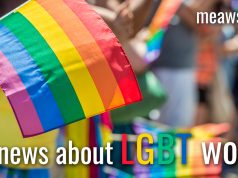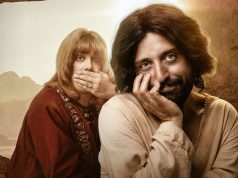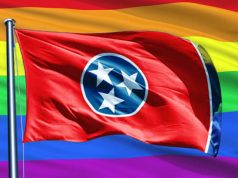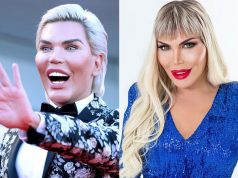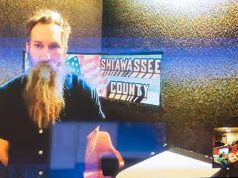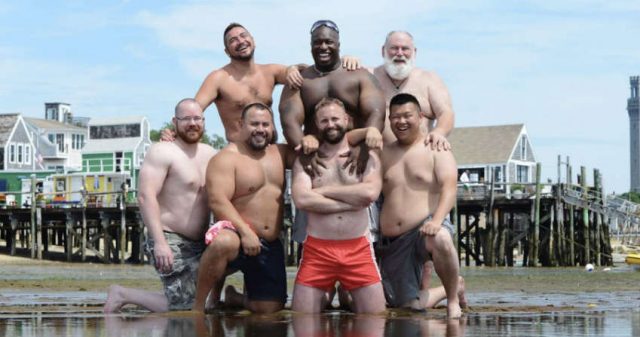
For those tumbling on to the gay scene for the first time today, it might be tempting to think bears have always been with us. However, although gay bars – both underground and overground – existed for much of the 20th century, the commercial bears scene is a more recent phenomenon.
Most agree that the nascent bear scene gained traction in California. In his seminal and authorative Bear Book, historian Les Wright says there are two entries for ‘bear club’ in the minutes of a Los Angeles-based Motorcycle club in 1966.
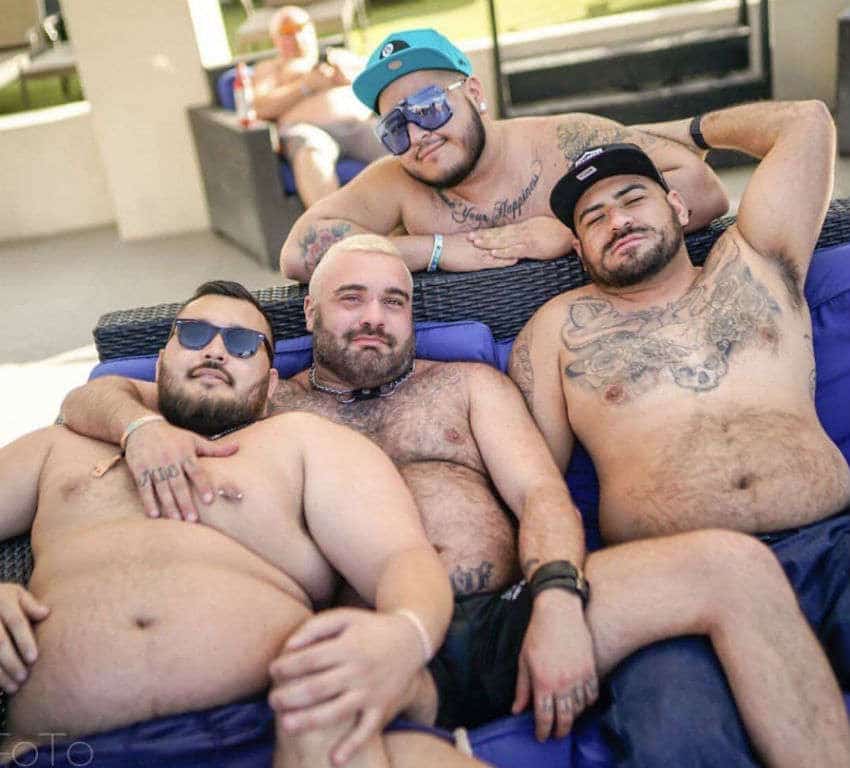
Friends at International Bear Convergence 2019, Palm Springs, California (Photo: By @bearinf via @kahthexis on Instagram)
Further strands of the baby bear scene can be traced back to San Francisco. The California city, a magnet for LGBTI people since the early 1900s, was among the first US cities to develop an identifiable gay scene.
As the gay scene grew, it diversified. Leather bars, like the Tool Box, began to emerge in the 1960s. They catered for those turned on by bikers and men in uniform. They became the places to hang out if you were into Tom of Finland-style, rugged men.
This included guys who were hairy or large. Soon enough, bigger guys – who appreciated the fact others found their size attractive – were being identified as their own sub-group: bears.
The term ‘bear’ began to be bandied around increasingly in the 1970s for any gay man who was big and hirsute.
There already existed loose, informal networks of self-identified ‘chubby chasers’ in the US. These became more formalized when a San Francisco man, Charlie Brown, placed a small ad in counter-culture newspaper, Berkeley Barb, in February 1976 calling for a meeting of gay chubbies and chasers.
This led to the first ‘Girth and Mirth’ group, an informal gathering of guys who were chubby or overweight. Girth and Mirth groups soon followed in New York and Boston. As a group to celebrate overweight men and those who liked them, it was very much a proto-bears organization.
In 1979, writer George Mazzei penned an article for The Advocate magazine in which he asked, ‘Who’s who in the zoo?’. It split gay men down into seven different types of animals, and the bear was one of them.
It noted, ‘bears are usually hunky, chunky types reminiscent of railroad engineers and former football greats. They have larger chests and bellies than average and notably muscular legs. Some Italian-American bears, however, are leaner and smaller; it’s attitude that makes a bear.’
This wasn’t just a West Coast phenomenon. There are reports of groups of bearish men meeting at Florida bars such as The Ramrod and Tool Room in Miami and Tacky’s in Fort Lauderdale.
The pace picked up in the mid-80s. California-based publishers Richard Bulger and his partner Chris Nelson launched Bear magazine in 1987. A friend of Bulger’s, Bart Thomas, began the title as a photocopied magazine of sexy photos and personal adverts. However, he died from AIDS-related illness shortly after it began and Bulger took it over.
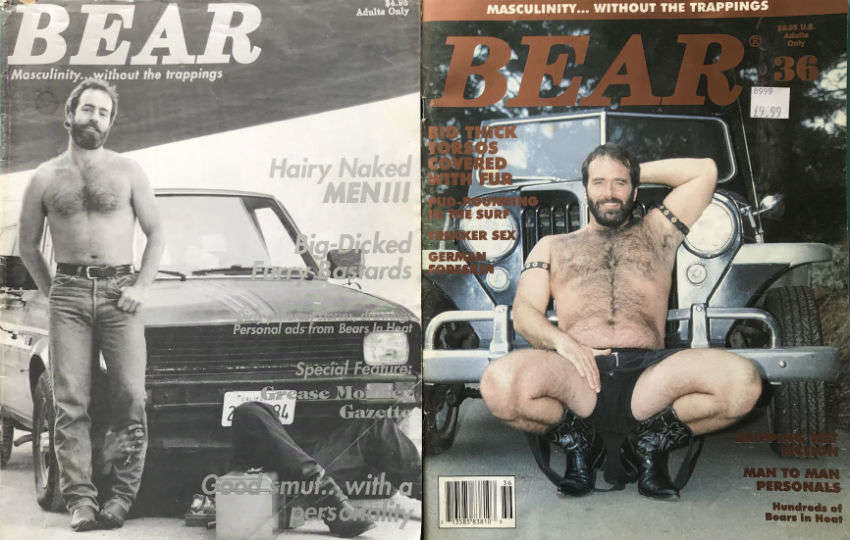
The arrival of Bear magazine in the late 1980s cemented bears as a gay subculture (Images: Bear magazine)
One contributor to Bear magazine was cartoonist Fran Frisch.
Raised in Minnesota, Frisch worked in a steel mill for much of his career. But he developed a side-line as a cartoonist. He began to send his artwork of to gay magazines in the mid-80s and selling his bear T-shirts at Bear Hug parties in San Francisco, which he began to visit regularly.
In 1990, he moved to the city. He went on to be one of the co-founders of the 1992 Bear Expo, which developed into International Bear Rendezvous.
Now 70, and retired to Palm Springs, he has fond memories of the early bears scene.
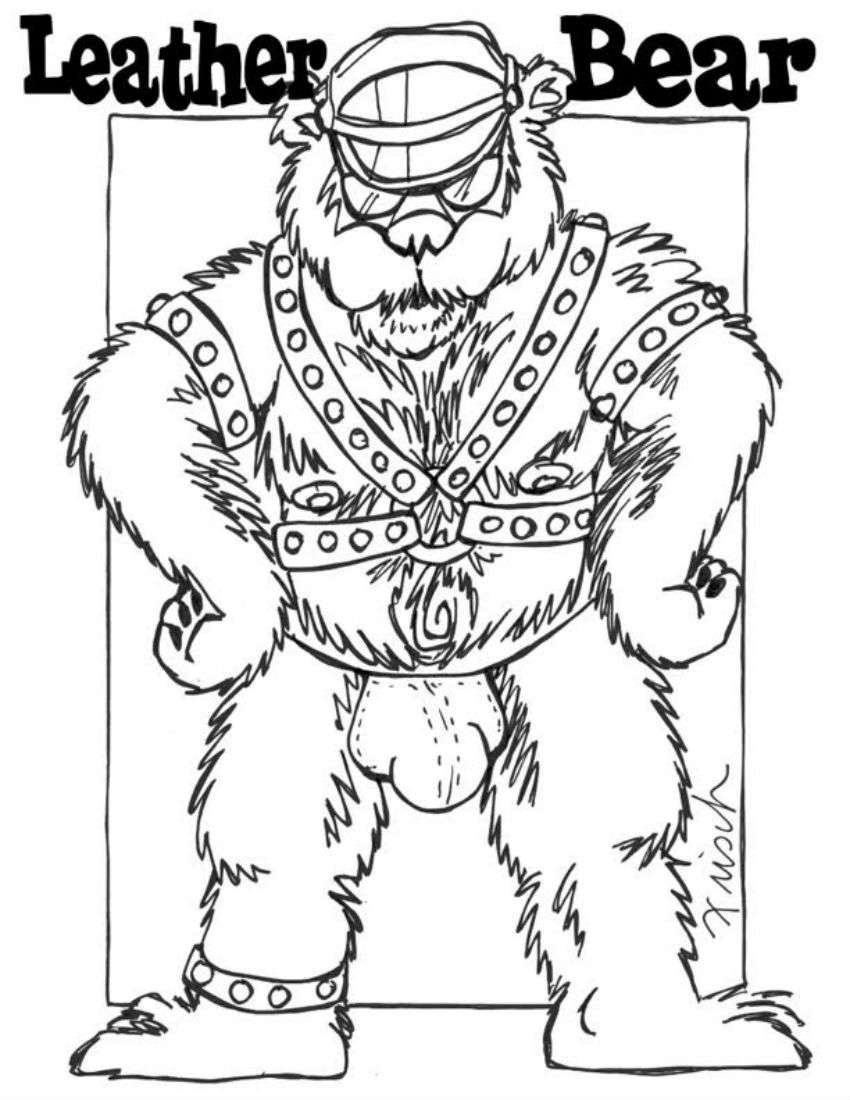
A bear illustration by Fran Frisch (Reproduced with permission)
He says big men and bears, ‘weren’t recognized until they started to show their strength as a community, with the Bear Expo (1992) and Bear Rendezvous (1995). They opened up the city, and the gay community opened up their arms to them.
‘Before that, it was underground, a subculture. Then in the late 80s and early 90s, it almost became popular to be a bear in San Francisco.’
The launch of Bear magazine really cemented bears as a gay sub-sect. A year later, Drummer magazine published its own 21-page ‘Mountain Men’ feature – the first time it had devoted such a celebration to bear-ish men.
At the same time, the initial bear gatherings sprung up. At the beginning, these were grassroots social groups, such as Bear Hug in the US.
In tandem, the early internet arrived. Invites to private bear parties appeared on computer bulletin boards in the San Francisco area.
The previously unheard of ability for men to connect online led to new self-identifying groups to proliferate – and bears were at the forefront of this. One of the most popular was Bears Mailing List (BML), which arrived in 1988 courtesy of founders Steve Dyer and Brian Gollum.
Queer historians have also observed that the bear scene sprung up following the arrival of AIDS and HIV. In the 80s, many men feared appeared too skinny in case anyone think they might be ill. Some even perceived chubbiness as a sign of good health.
Also, after the long hair and moustaches of the 70s, fashion went clean cut in the 1980s (see Tom Cruise in Top Gun for mid-80s sex appeal zeitgeist). However, this hairless and slim beauty ideal didn’t appeal to everyone.
Post-Stonewall, after finding the courage to admit liking men, some people felt more empowered to talk about exactly what type of men they liked – and it wasn’t slender or toned.
Dedicated venues for big guys began to emerge. The Lone Star Saloon, which was to become one of the most famous bear bars in the world, opened in San Francisco in early 1989 on the corner of Howard and 7th (its founder, Rick Redewell, died within a couple of years of its opening).
Disaster struck the bar just six months after opening. The Loma Prieta earthquake resulted in the bar having to be demolished. It reopened in its current location, 1354 Harrison Street.
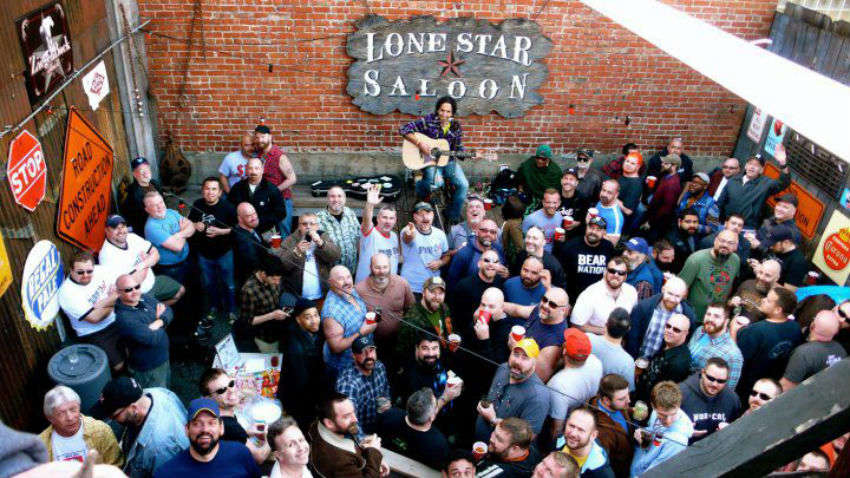
Photo: The Lone Star Salon/Facebook
Chris Nelson, of Bear magazine, went on to publish an influential photography book, The Bear Cult, in 1991.
The early 90s also saw the emergence of ever bigger bear events. The aforementioned International Bear Expo ran for three years in San Francisco: 1992, 1993 and 1994, including an International Mr Bear competition in 1992. This evolved in International Bear Rendezvous.
Fran Frisch was involved with co-founding the first couple of Bear Expos. He says the goal of the first one, which took place at the Holiday Inn on California Street on San Francisco, was to demonstrate the joy and strength in creating a bear community.
‘Our goal was was to get the other bears organized in their city, so they didn’t have to come to San Francisco or New York to feel accepted. That was our main goal: to help other bears in other cities feel they could have events and do things themselves.’

Mid-00s bear magazines from the US and Europe
This explosion in the American bear scene quickly spread internationally. Towards the late 80s, a group called Chubbies and Bears began to meet at the Mortimer Arms on Tottenham Court Road, London. It eventually settled on Wednesday and Saturday nights at The Empire in Holborn, where it ran until the late 90s.
‘The first Wednesday, 20 people attended,’ remembers organizer John Broaders. ‘We thought this isn’t going to work but the next week it was about 200. Word of mouth got out. This was 1990-1991.
‘There was nowhere for people to go who either liked big guys or were big themselves or the beary type. It was the right place at the right time.’
Other social groups and networks that sprung up in the UK included Bears UK and Bearhug, while the Kings Arms in Soho became another popular bears hangout.
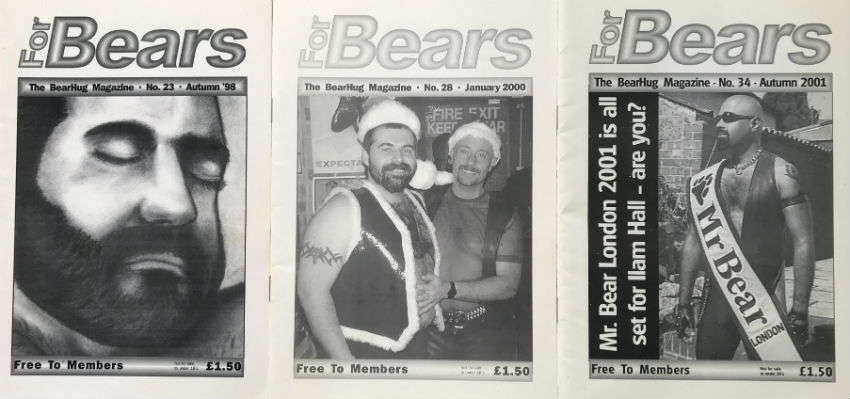
British BearHug magazine, For Bears (Photo: BearHug)
In 1993, Bulk opened in London. It produced a regular newsletter (Bulk Delivery) for members and launched as a fortnightly club at the Block in Islington. It was an instant success and soon sought a weekly Saturday home.
‘The whole concept of “bears”, was drifting over from the US,’ promoter Bobby Pickering recalls to Gay Star News.
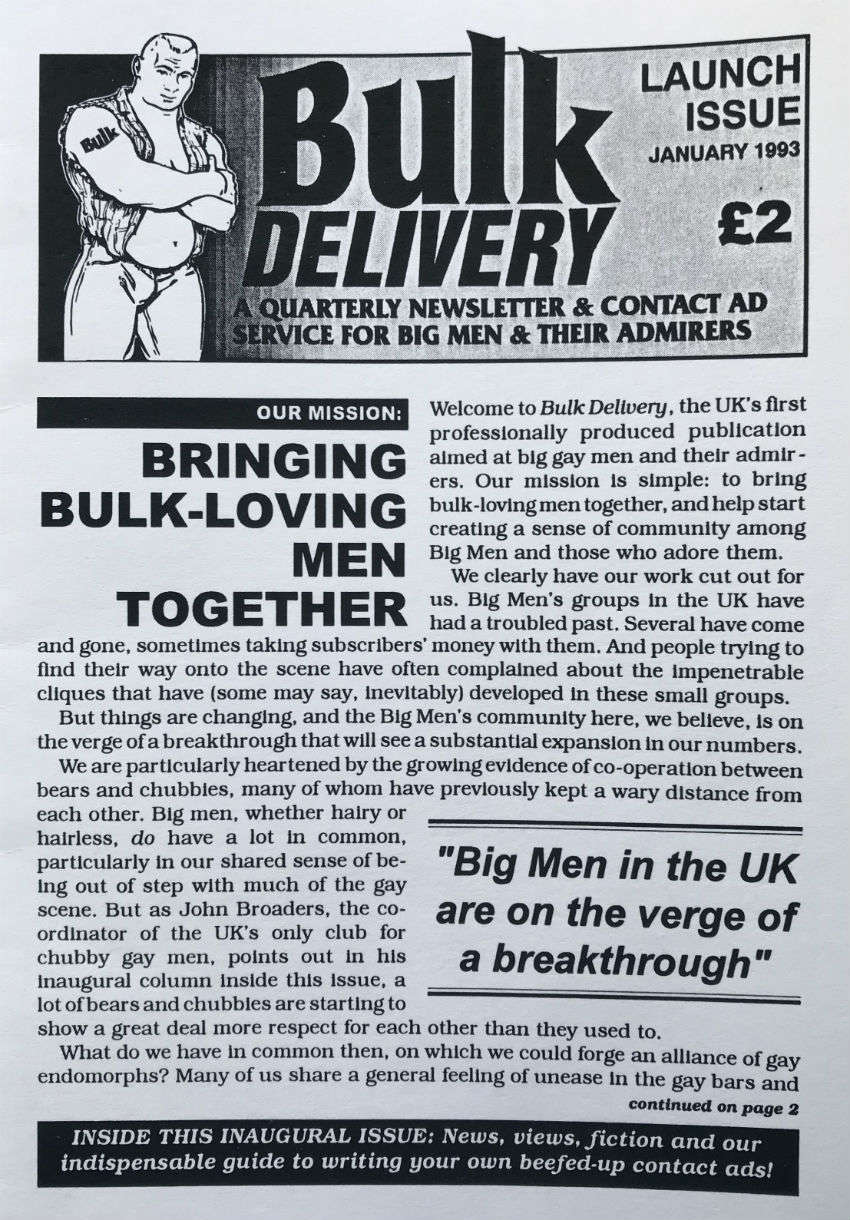
Bulk Delivery newsletter – a precursor of the London club, Bulk
‘My partner Derek and I wanted to develop a club space on a much bigger scale, drawing all types of gay guys together – chubbies, bears, body builders, gainers, older guys.
‘The time was just ripe, as the demographics of the gay scene were shifting. Guys were getting a bit older, and many found they were feeling unwelcome at main gay venues. Also, there was a real “no fats / no fems” mentality about a rigid acceptable gay identity at the time that we felt needed challenging.’
The club ran until the late 1990s. After its closure, promoter Mark Ames opened up XXL in 2000, which has gone on to become the biggest weekly bears club in the world. It currently occupies the 5,000-capacity Pulse near London Bridge.
Clubs sprang up all over Europe in the early 90s, and the Federation of European Big Men’s Clubs emerged in 1992, loosely connecting groups such as Sweden’s Viking Bears, Berlin’s Heavy Teddies and various Girth and Mirth groups.
In Australia, a club called OzBears Australia ran from 1990 to 1995 in Sydney. It was followed by the formation of Harbour City Bears in 1995. Queensland got Brisbears in 1993, while VicBears formed in Melbourne in 1996. All three groups to continue to this day, hosting regular events.
A ‘Bears flag’ was created in 1995 based on an idea by Washington DC’s Craig Byrnes. It features a bears paw in one corner, over seven stripes representing different nationalities and colors of fur. It remains a popular hallmark of bear clubs and events.

The bear flag arrived in 1995
With the growth of gay bars and clubs, there’s been a similar growth in big bear gatherings.
Lazy Bear Weekend has been running since 1996 in Guerneville, California. Bear Week Provincetown arrived in 2001 – and the first Bear Week in Sitges – one of the biggest bear events in Europe – in 2006.
The early bears scene was very white and hairy – reflecting its roots in the populist imagery of American blue collar workers. However, that image has diversified. For example, Chubby Bear Bangkok is a regular bears gathering in Thailand, while BearMex attracts bear lovers to Mexico City.
In the US, Big Boy Pride hosts events and a big annual gathering aimed at African American big guys. You will find a bear or big boy event in almost every country where there is a gay scene, from Iceland to Argentina, Germany to Canada.

Big Boy Pride 2018 (Photo: @only1bloo_23 | Instagram)
The bear world has become a broader church. However, it remains a curiously queer phenomenon. Where is the equivalent straight worship of the husky big man?
By contrast, we have gay bear underwear brands, web shows, movies, musicians, bear cabaret performers and go-go’s, porn stars and hairy and beary Instagram thotties.
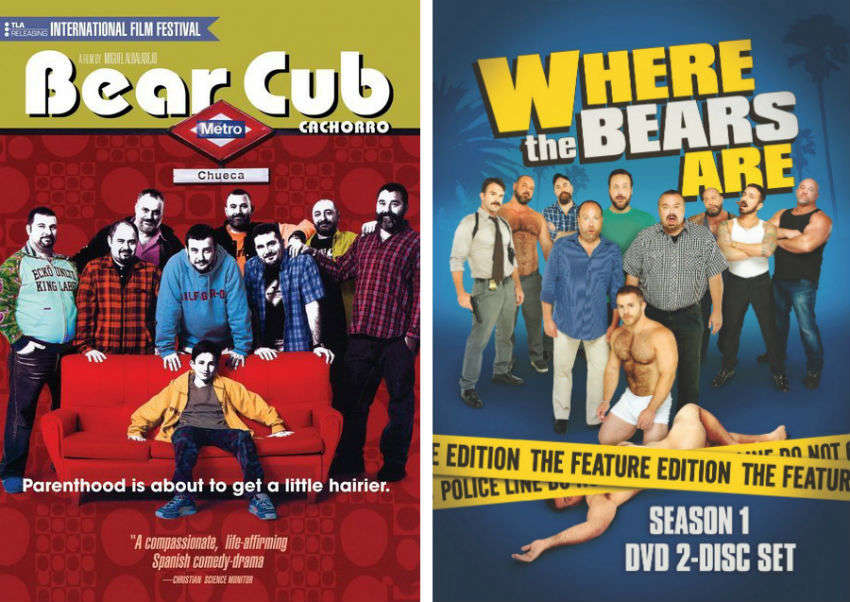
DVD artwork for Spanish gay-themed movie, Bear Cub (2004) and web-series, Where The Bears Are (2012)
From online bulletin boards to geo-location dating, another big unifier of the bear scene was the arrival of Growlr. US entrepreneur Coley Cummiskey launched the app in 2010. He announced its sale last month to big tech company Meet for $12million.
That perhaps demonstrates another aspect of the bear scene’s evolution. From informal groups of friends meeting in bars and turning out photocopied newsletters, to big business and high-production values.
It’s perhaps lost some of its community bonhomie along the way. Fran Frisch remembers the early days of Bear Expo as feeling like he was part of a ‘fraternity’.
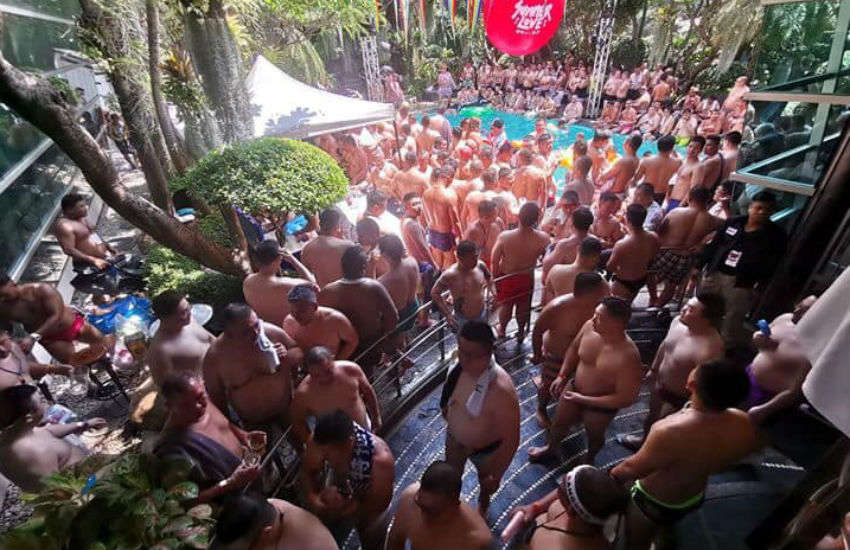
A Chubby Bear Bangkok pool party (Photo: Chubby Bear Bangkok/Facebook)
‘It’s changed from its grassroots to what it is now,’ he concedes. ‘The muscle bear and pretty bear type of thing … I guess it’s just progressed the way the rest of the gay scene has progressed. Whereas we were grassroots people, they’re now enjoying the beardom without the hard work!
‘I think that’s partly the internet. But it doesn’t upset me,’ he laughs. ‘It’s just how it works.’
For many, whether online or in real life, the evolving bears scene continues to provide a sanctuary: a self-empowering celebration of the big, hairy and plus-size beautiful.
Big Boy Pride brings plus-size beauty and deeper love to Florida
Music Bear Tony Banks: ‘If it wasn’t for gay men, there would be no hip hop’


